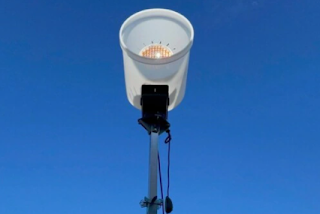Fujikura and US Conec have reached an agreement for licensing and collaboration that enables both companies to manufacture intermateable multi-fiber and duplex VSFF (Very Small Form Factor) connectors. These next gen connectors target 400G and up pluggable transceivers or co-packaged optics for carriers and data centers.
The MMC, a multi-fiber connector employing a reduced-size 1x16-fiber MT-style ferrule (TMT), improves MPO port density by a factor of three, supporting higher density cabling infrastructure with very low insertion loss performance. The new TMT ferrule has now been tooled by both US Conec and Fujikura with full intermateability eliminating assurance of supply concerns. The TMT ferrule uses the proven alignment structure of the MT-16 ferrule which is deployed today in MPO-16 connectors and is compatible with standard fiber-optic cabling technology employing 125 µm diameter optical fibers with 250 µm pitch.

US Conec's ELiMENT MDC connector, a duplex fiber-optic connector with proven 1.25 mm diameter ferrule technology specified in the SFP-DD, QSFP-DD and OSFP pluggable transceiver MSAs, has the same footprint as the MMC and provides three times the density over the duplex LC format while supporting port breakout architectures for emerging transceiver designs. The collaboration to develop and deliver MMC and MDC connectors maximizes the synergy between Fujikura and US Conec while enabling a multi-vendor supply chain.
"The MMC and MDC connector formats usher in a new era of connectivity by delivering unmatched density, simple insertion/extraction, field configurability and optimal carrier grade performance," said Joe Graham, President of US Conec. "The collaborative effort between US Conec and Fujikura ensures robust supply chain demands are met while opening the door to rapid high-volume deployments with leading edge connector technology."
"We dedicate ourselves to providing exceptional value for our customers and contributing society with "Tsunagu" technologies such as cutting edge of optical fibers, fiber-optic cables, multi-fiber connectivity and so on," said Naoki Okada, Director and Chief Operating Officer of Fujikura. "A combination of Fujikura's game-changing technology, 6,912-fiber ultra-high density fiber-optic cables – WTC® (Wrapping Tube Cable) with SWR (Spider Web Ribbon) and the MDC & MMC connectors provides optimal solutions."
http://www.usconec.com






















